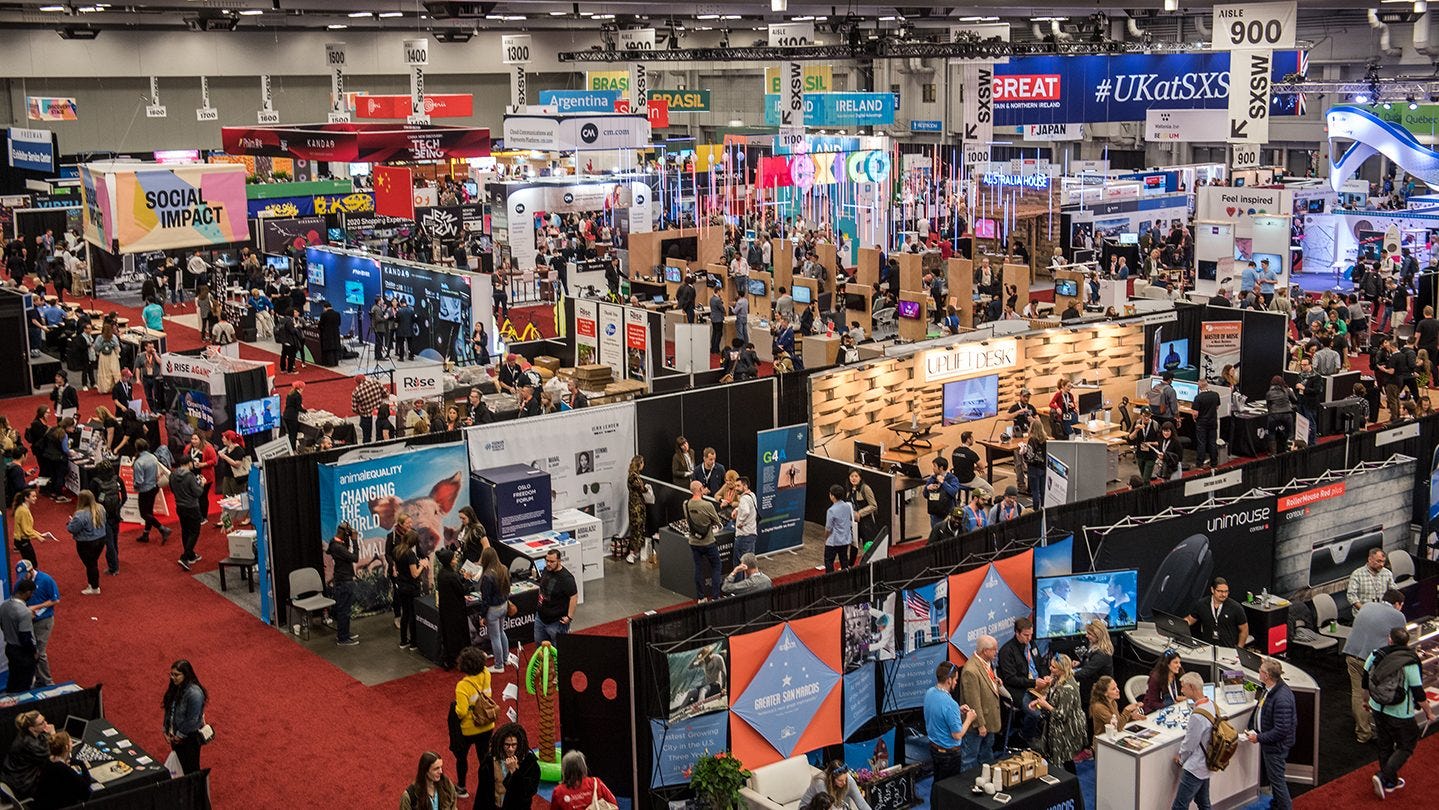Hi! 👋
In The B2B Bite, I break down the most effective strategies and tactics to help B2B companies do better marketing.
Sent every Monday AM. Best enjoyed with coffee.
Working in B2B enterprise tech, big-booth trade shows historically have been the backbone of any marketing strategy I've been involved with.
It makes sense, right? If you're a buyer that's evaluating a lot of vendors in one go - or a vendor that needs some serious face time to explain what the hell it is your company does - sitting in an air-conditioned room with mini muffins and average coffee on tap to get/give that information makes a lot of sense.
That is... until the internet came along.
Now it's easier than ever to get information on a particular product or service in less time than it takes to order your first drink at the hotel-you-could-never-afford-but-work-is-paying-so-it's-cool bar.
According to Forrester, 80% of the B2B buyer journey in 2020 took place online. Clients are doing extensive research across company websites, social media channels, owned events and other channels before picking up the phone to talk to someone.
This was starting to happen even before the pandemic hit.
Like what you’ve read so far? Share with a friend and we'll be B2B besties for life.
COVID brought in-person trade shows and conferences to a grinding halt. Many event organisers turned to virtual events - quite successfully in some cases, I might add - but it wasn't quite the same.
And this forced B2B companies to turn inwards and explore new channels to reach their customers. Routes to market that made consumer-focussed businesses a lot of money, but woefully neglected on this side of the owl.
Check out this graphic from Gartner which clearly shows how B2B CMOs have shifted their spend towards digital channels - email, mobile, social, website - with events and offline advertising seeing the biggest decrease in budget allocation.
My belief is that this isn't a stopgap before proceedings return to normal. The value of a B2B company owning their audience, rather than simply paying for access to one from a third-party, is immeasurable.
Total control of the message and its placement. Lower barrier to entry for businesses with smaller marketing budgets. No competition to steal your limelight.
It's hard to give these benefits up once you've had a taste - especially when the cost is typically a fraction of what it costs to book a sizeable booth on a trade show floor.
Do I think big-booth trade show events and conference are going away? Absolutely not. Many have been around for years - decades! - and the network and credibility they've established is too established and valuable to simply dissolve into thin air.
They will have to evolve. Explore offering smaller, more intimate opportunities for brands to get in a room with their target customers - one that isn't bathed in fluorescent lighting and demands attendees be able to walk a marathon to get from side to the other.
For brands, my advice is to adopt a build AND buy strategy, weighting their marketing mix appropriately on activities that bring prospective customers to them - think content, community, social and owned events - and opportunities to display their expertise in the form of targeted panels or keynotes wherever their clients choose to congregate.
But ditch the booth. You don't need it.
Mixing it up this week with five must-follows on Twitter for you B2B marketers. Check them out!
@amandanat - Killer threads on marketing and content.
@jmoserr - I learn something new on marketing every day from this guy.
@ccmarce_writes - No-one creates Twitter lists like Chantelle. No-one.
@inkandcopy - An amazing Twitter friend who has mastered copy like no other.
@JHKrak - Changing the game on how B2B brands should tackle social.
And that's it! See you next week.






